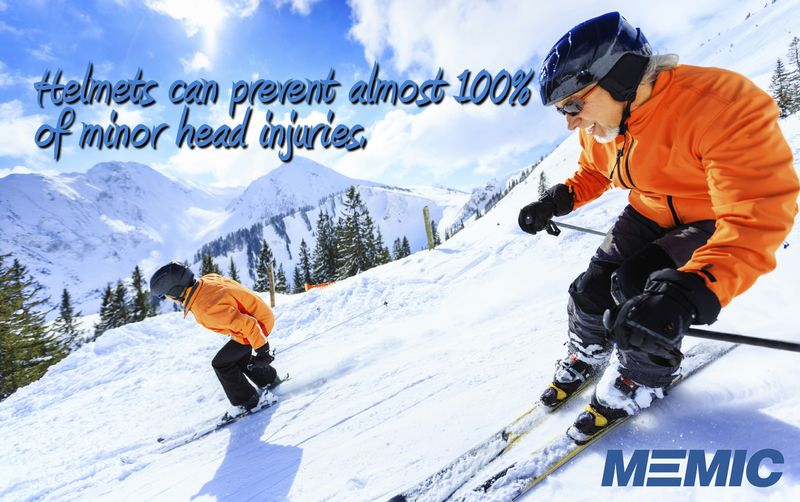This Winter It's Time to Protect Our Heads!
Head and face injuries are common among skiers and riders. When high rates of speed are factored in, those injuries can be significant. Did you know:
- In 2012, “67 percent of skiers and snowboarders now wear helmets.” NSAA Helmet Usage
- Head trauma accounts for 120,000—or 1 in 5—of the 600,000 injuries suffered by skiers and snowboarders each year. The Dangerous Mistake You’re Making on the Slopes
- A concussion is caused by the sudden deceleration of your head and your brain impacting the inside of your skull; not by your skull impacting a surface or object. Mayo Clinic: Concussion Causes
- Skiers and snowboarders travel at an average maximum speed of 27mph. - The Science Behind Helmets
- Hitting your un-helmeted head against a fixed object while skiing or snowboarding at an average speed of 19 mph can impart g-force to your brain of between 329 and 696g. – The Science Behind Helmets (on average, football tackles generate between 50 and 120g - G-force and gray matter)
- You can sustain a minor concussion from an impact with as little as 95g and a serious, possibly life-threatening brain injury from 275g. – How Serious Are Concussions
- The ASTM F2040 test for recreational snow sports helmets requires force at impact to be under 300g at 13.85mph. - The Science Behind Helmets
The equipment available won’t always prevent those significant injuries. So why would you wear a helmet?
Here are some points to ponder:
- Helmets can prevent almost 100 percent of minor head injuries (defined as scalp lacerations, scrapes, fractures, surface bruises). - The Science Behind Helmets
- Helmets can, at speeds below 30mph, reduce the likelihood of head injury when impacting icy snow. - Helmets and The Science Behind Helmets
- Speeds inherent in skiing and snowboarding can overwhelm the helmet’s degree of protection, but still reduce the force imparted to the head.
- Helmets are no replacement for good decisions and behavior within one’s skill and ability for the conditions and environment.
The bottom line is: Today's ski/snowboard helmets are light, comfortable, inexpensive, and effective. While they won’t protect from every impact, helmets offer an extra degree of protection over and above the safety basics of skiing/riding responsibly for the environment, snow conditions, and your ability.
Before you leave the helmet home or on the shelf consider your answer to this question, “If there is a tool available, that offers some protection from potential injuries, why wouldn’t you use it?”


